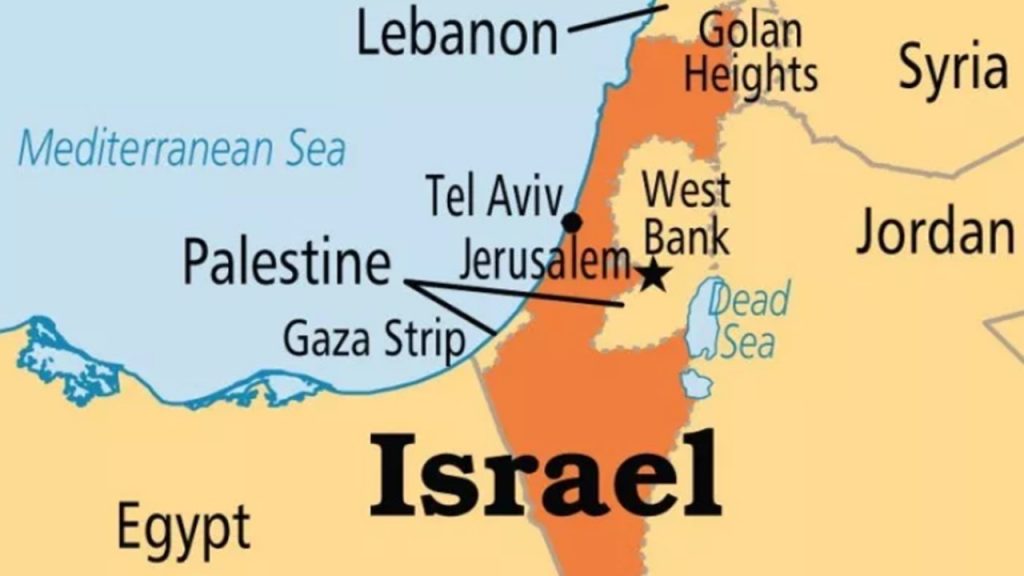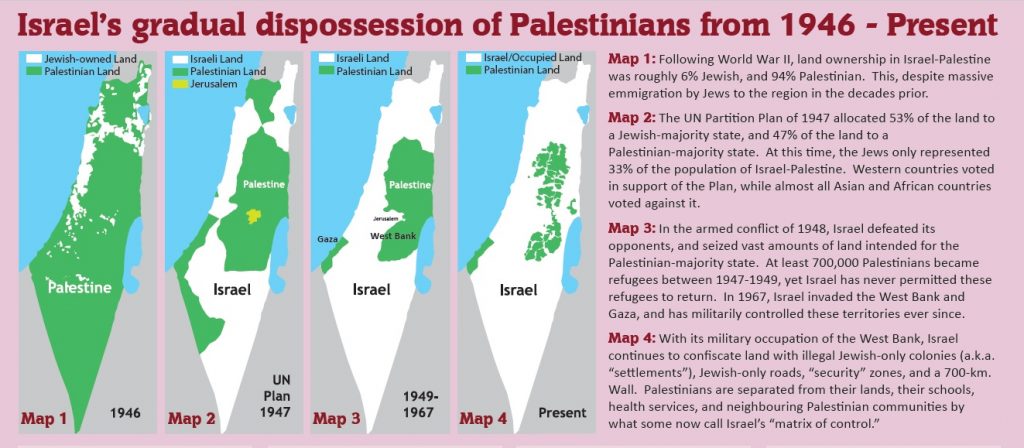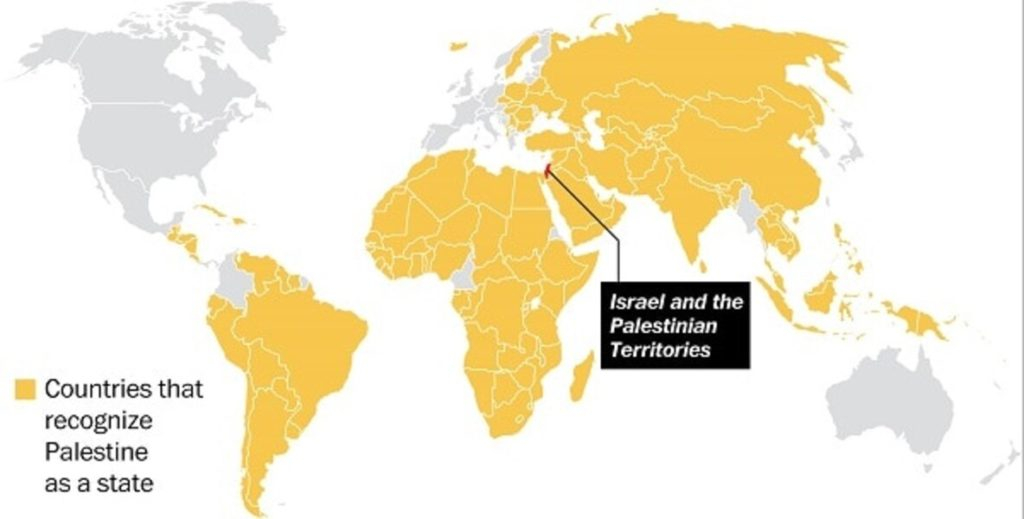Contents
- Palestine faces an existential threat
- World Bank’s STARS project needs an overhaul
- Reading the draft EIA Norms
PALESTINE FACES AN EXISTENTIAL THREAT
Focus: GS-II International Relations
Why in news?
- The UN Secretary General told a virtual meeting of the United Nations Security Council that the Israeli-Palestinian conflict is at a “watershed moment” and that the Israeli plans to annex parts of the West Bank have alarmed the Palestinians, many Israelis and the international community.
- Such annexation would be “a most serious violation of international law”.
- The UN Secretary General called upon the Israeli government to abandon its annexation plans and asked the Middle East Quartet (the United States, Russia, the European Union and the UN) to resume its mandated mediatory role.
Reason for the Alarm
- The UN Secretary General’s alarm has been sounded in the context of the Israeli Prime Minister’s reported plan to annex 30% of the Occupied West Bank. This will include annexation of all the existing (post-1967) settlements in addition to areas surrounding them and access roads.
- This, from published accounts, has the approval of the Trump Administration.
What does International Law say?
- Under international law, annexation is forcible acquisition of territory by one state at the expense of another state.
- Therefore, such annexation is illegal under international law and would violate the universally acknowledged principle of the “inadmissibility of the acquisition of territory by force”.
- Office of the High Commissioner for Human Rights (UN Human Rights) described the annexation of occupied territory as a serious violation of the Charter of the United Nations and the Geneva Conventions, and contrary to the fundamental rule affirmed many times by the UN Security Council and the General Assembly that acquisition of territory war or by force is inadmissible.
Effect of this annexation

- What would be left of the West Bank would be Palestinian Bantustan, islands of disconnected land completely surrounded by Israel and with no territorial connection with the outside world.
- Israel has recently promised that it will maintain permanent security control between the Mediterranean and the Jordan River.
Views of the People of Israel on Israeli Annexation
- An opinion poll conducted by the Israeli newspaper showed more than 25% of the Israelis opposed annexation with just over 10% supporting full annexation with political rights for the Palestinians.
- However, more than 15% of Israelis voted for full annexation with no political rights for Palestinians.
Israel – Palestine Conflict
- The Israeli–Palestinian conflict is the ongoing struggle between Israelis and Palestinians that began in the mid-20th century.
- The origins to the conflict can be traced back to Jewish immigration and sectarian conflict in Mandatory Palestine between Jews and Arabs.
- Despite a long-term peace process and the general reconciliation of Israel with Egypt and Jordan, Israelis and Palestinians have failed to reach a final peace agreement.
- The key issues are mutual recognition and security, borders, water rights, control of Jerusalem, Israeli settlements, Palestinian freedom of movement, and Palestinian right of return.

What is the Two-state solution?
- The two-state solution to the Israeli–Palestinian conflict envisages an independent State of Palestine alongside the State of Israel, west of the Jordan River.
- The boundary between the two states is still subject to dispute and negotiation, with Palestinian and Arab leadership insisting on the “1967 borders”, which is not accepted by Israel.
- Many attempts have been made to broker a two-state solution, involving the creation of an independent Palestinian state alongside the State of Israel (after Israel’s establishment in 1948).
- In 2007, the majority of both Israelis and Palestinians, according to a number of polls, preferred the two-state solution over any other solution as a means of resolving the conflict.
India’s stand in the Israel – Palestine conflict:

- Israel and the Palestinian Territories Countries that recognize Palestine as a state
- India has consistently voted in favour of those resolutions that promote the two-state solution with a Palestinian claim to East Jerusalem.
- Peace based on two-state solution is much needed in the face of international proposals that are in breach of these principles, and cannot be forged between Israel and a third country [U.S.], but can only come from Israel-Palestine talks, which India also supports.
-Source: The Hindu
WORLD BANK’S STARS PROJECT NEEDS AN OVERHAUL
Focus: GS-II Social Justice
Introduction
- Delivering a service, like education, requires a capable state, especially given the scale and complexity of its large and diverse population. Building state capability involves a process of learning to do things on one’s own, fundamentally making it something that cannot be outsourced.
- The World Bank’s STARS project, a $3 billion project to improve education in six Indian States gives a larger role to non-state actors and by increasing the use of technology.
What is the World Bank’s STARS?
- STARS is – Strengthening Teaching-Learning and Results for States Program (STARS).
- It is a project to improve the quality and governance of school education in six Indian states.
- Six states are- Himachal Pradesh, Kerala, Madhya Pradesh, Maharashtra, Odisha, and Rajasthan.
- Beneficiaries: More than 15 Lakh schools with over 25 crore students between the age of 6 and 17.
What are the Initiatives under STARS?
- Focusing more directly on the delivery of education services at the state, district and sub district levelsby providing customized local-level solutions towards school improvement.
- Addressing demands from stakeholders, especially parents, for greater accountability and inclusionby producing better data to assess the quality of learning; giving special attention to students from vulnerable section.
- Equipping teachers to manage this transformationby recognizing that teachers are central to achieving better learning outcomes.
- Investing more in developing India’s human capital needsby strengthening foundational learning for children in classes 1 to 3 and preparing them with the cognitive, socio-behavioural and language skills to meet future labour market needs.
Flaws in the STARS approach to build state capacity
- It fails to address the basic capacity issues: major vacancies across the education system from District Institutes of Education and Training (DIETs), district and block education offices, to teachers in schools, remain unaddressed.
- World Bank ignores that decentralising decision-making requires the devolution of funds and real decision-making power. It requires not just investment in the capacity of the front-line bureaucracy but also in increasing their discretionary powers while fostering social accountability.
- Trust is entirely ignored in the World Bank project. Instead, the Bank displays yet again an over-reliance on Information and Communications Technology (ICT) as a panacea that lacks any backing in evidence (Trust here implies listening and collaborating across different levels within the administration).
- Outsourcing basic governance functions by “expanding private initiatives” and “reducing government tasks” will not make education “more relevant to local needs” or “democratically promote people’s participation by empowering local authorities” as stated in the project document.
Way Forward: For “building state capacity” and delivery of education
- Administration must be equipped with adequate physical, financial and human resources. An overburdened bureaucracy with vacancies and without basic equipment cannot be expected to be effective.
- Administrative or governance reforms must give greater discretion to the front-line bureaucracy to address local issues and innovate if required.
- There needs to be trust within the administration among peers and across different levels within the administration.
-Source: The Hindu
READING THE DRAFT EIA NORMS
Focus: GS-III Environment and Ecology
Why in news?
The Delhi High Court extended the deadline for public feedback on the draft Environment Impact Assessment (EIA) Notification 2020.
Background to the Environment Impact Assessment (EIA)
- A signatory to the Stockholm Declaration (1972) on Environment, India enacted laws to control water (1974) and air (1981) pollution soon after.
- After the Bhopal gas leak disaster in 1984 that the country legislated an umbrella act – Environment (Protection) Act, 1986.
- Under the Environment Protection Act India notified its first EIA norms in 1994, setting in place a legal framework for regulating activities that access, utilise, and affect (pollute) natural resources.
- Every development project has been required to go through the EIA process for obtaining prior environmental clearance ever since.
The contention: EIA’s flaws
- The 2020 draft offers no remedy for the political and bureaucratic stronghold on the EIA process, and thereby on industries.
- It proposes to bolster the government’s discretionary power while limiting public engagement in safeguarding the environment.
- While projects concerning national defence and security are naturally considered strategic, the government gets to decide on the “strategic” tag for other projects.
- The new draft exempts a long list of projects from public consultation.
What’s exempt?
- All inland waterways projects and expansion/widening of national highways will be exempt from prior clearance. These include roads that cut through forests and dredging of major rivers.
- The 2020 draft also exempts most building construction projects of built-up area up to 1,50,000 sq m.
The big shift
- The two most significant changes in the new draft are the provisions for post-facto project clearance and abandoning the public trust doctrine.
- Projects operating in violation of the Environment Act will now be able to apply for clearance.
- In an order on the Supreme Court held “ex post facto environmental clearances” contrary to law saying Environment law cannot countenance the notion of an ex post facto clearance.
- The 2020 draft also spells out how the government will take cognisance of such violations.
- There is no scope for any public complaint about violations. Instead, the reliance is on the violators to disclose, suo motu, that they broke the law.
-Source: Indian Express





